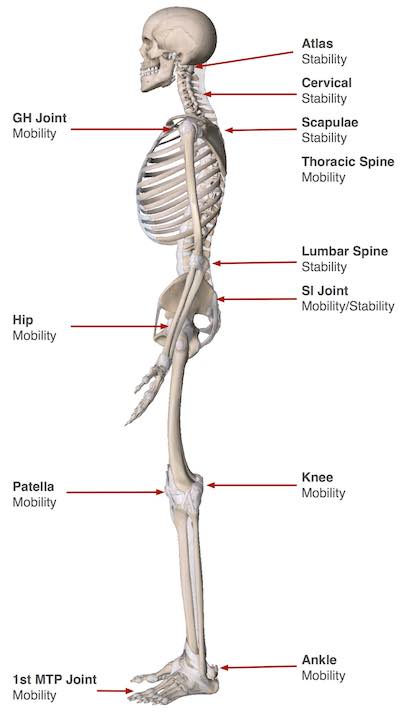Mobilization techniques are used to aid in restoring normal motion to joints. These techniques are taught, enabling the client to restore alignment on their own. There are some mobilization techniques that could benefit from assistance from the practitioner but care must be taken when applying these techniques.
When looking at joint mobilization we need to understand the Stability–Mobility Continuum however it is not quite as clear cut as this when we start to look at different planes of movement.
Mobility can be described as the ability to produce a desired movement. Stability can then be described as the ability to resist an undesired movement.
Purpose of Mobilization Techniques
1. Used to Modulate Pain
2. Used to increase ROM
3. Used to treat joint dysfunctions that limit ROM by specifically addressing altered joint mechanics
Factors that may alter joint mechanics:
1. Pain & Muscle Guarding
2. Joint Hypomobility
3. Joint Effusion
4. Contractures or adhesions in the joint capsules or supporting ligaments
5. Malalignment or subluxation of bony surfaces
Joint by Joint Analysis

The key joints that may require Self-Mobilization Techniques are:
1. 1st MTP Joint
2. Ankle (Subtalar Joint)
3, Patella
4. Hip
5. SI Joint
6. Lumbar Spine
7. Thoracic Spine
8. Atlas
Through the assessment process key areas may be noted that could benefit from mobilization, an example of this would be an individual suffering from flat back posture.
Because of the flattening of the lumbar spine created by the posterior pelvic tilt the lumbar spine may require mobilization in extension. One self-mobilization technique that could be used is the McKenzie Push Up to aid in creating normal mobility in the lumbar spine in extension.
This would however be contradictive for an individual with lower cross syndrome where there is increased lordosis so great care must be taken in prescribing the right exercises for each individual case.
Specific instructions on correct application and proper sequencing must be given to the client to ensure the best results.
Contraindications:
The following conditions should avoid utilizing Self-Mobilization Techniques.
1. Ankylosing spondylitis
2. Inflammatory arthritis
3. Malignancy
4. Tuberculosis
5. Osteoporosis
6. Ligamentous rupture
7. Herniated disks with nerve compression
8. Bone disease
9. Neurological involvement
10. Bone fracture
11. Congenital bone deformities
12. Vascular disorders
13. Joint effusion
14. Precautions
15. Osteoarthritis
16. Pregnancy
17. Flu
18. Total joint replacement
19. Severe scoliosis
20. Poor general health
21. Patient’s inability to relax
Prior to utilizing mobilization exercises, it may be required to get approval from a qualified medical professional especially if any red flags show up in the assessment process.
